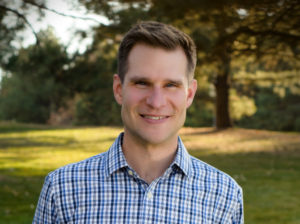 Let me tell you about how I broke down and cried the day after my wedding.
Let me tell you about how I broke down and cried the day after my wedding.
I’d had an amazing summer – finished my post-doc, ran a marathon, passed the licensing exam, and gotten married to the most incredible person in the universe. It was a whirlwind of celebration with family, friends, and my now wife…perfect, right?
Except for the fact that I had no job lined up after my post-doc.
I spent the summer applying for community mental health jobs that I was probably overqualified for, but somehow managed not to get any of them. It was easy to forget that small detail as we were planning our wedding and occupied with other things. So when we woke up after the wedding, said goodbye to our families and guests, and sat down in relative peace and quiet, it all came crashing down: I had no income and no idea what to do when we got back from the honeymoon.
So I started a private practice, largely because I didn’t know what else to do. Back then, there were no podcasts or consultants to help out. All I knew is that I needed referrals, and I had some inkling that referrals came from 1) relationships with other professionals, and 2) web searches. Over those first few months, I bought a lot of coffee for other therapists and learned web design & SEO when I wasn’t seeing clients. I got hooked up with a program that referred me reduced fee clients just to have people coming in the door. I also got a part-time contract job at the local university.
I think I grossed $1,537 that first tax year.
After eight months, I leased an office full time. I had a thriving therapy practice with a few evaluations each month. I moved to another office with a group of awesome therapists. Things were pretty good. Then life did its thing and threw me a curveball – my evaluation referrals increased tenfold nearly overnight thanks to a change in the local university’s policy on prescribing ADHD medication.
I had no idea what to do, but something told me that I needed to accept these referrals and figure out how to make it work. I scrambled to find out what assessment measures I needed and how to hire a couple of grad students to help with the testing. My wife talked me down when I realized I needed to spend nearly $10,000 on testing materials, and graciously had faith in me when I told her it was worth it. My former grad school department let me advertise to their students, and I found a couple of great psychometricians. I made it through that initial rush and got a little breathing room.
Soon I figured out something that I’ve repeated to consulting clients many times since: the question of “How do I get more clients?” is a lot easier to answer than “What do I do with all of these clients?” I got lured into building a busy practice without stopping to think about whether I actually wanted a busy practice. Nights and weekends were all fair game for working. I was torn between spending time with my wife and kids, and answering the call to provide for them by making money. A few years of that, and I was beyond stressed out. Working at Starbucks sounded awesome all of a sudden.
So I started the journey toward building a meaningful practice where I do the work I want to do and very little else. I loved testing, so I did some soul-searching and decided to phase out my therapy clients. I continually challenge myself to develop the most efficient systems possible, from deciding which measures to buy, to writing report templates, to training psychometricians, to insurance billing. “Outsourcing” is becoming a way of life.
The Testing Psychologist was born out of those years of pain – feeling overwhelmed, not knowing how to afford testing materials, spending hours and hours away from my family, and struggling to get paid by insurance companies and clients. I’d love to help you avoid the mistakes I made so that you can have a practice that’s meaningful, respectable, and profitable.
